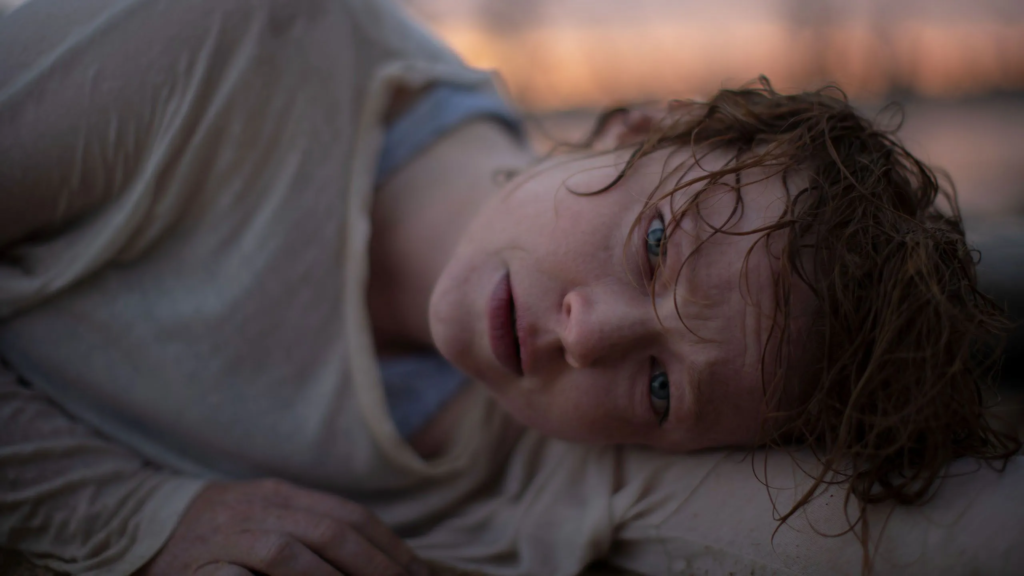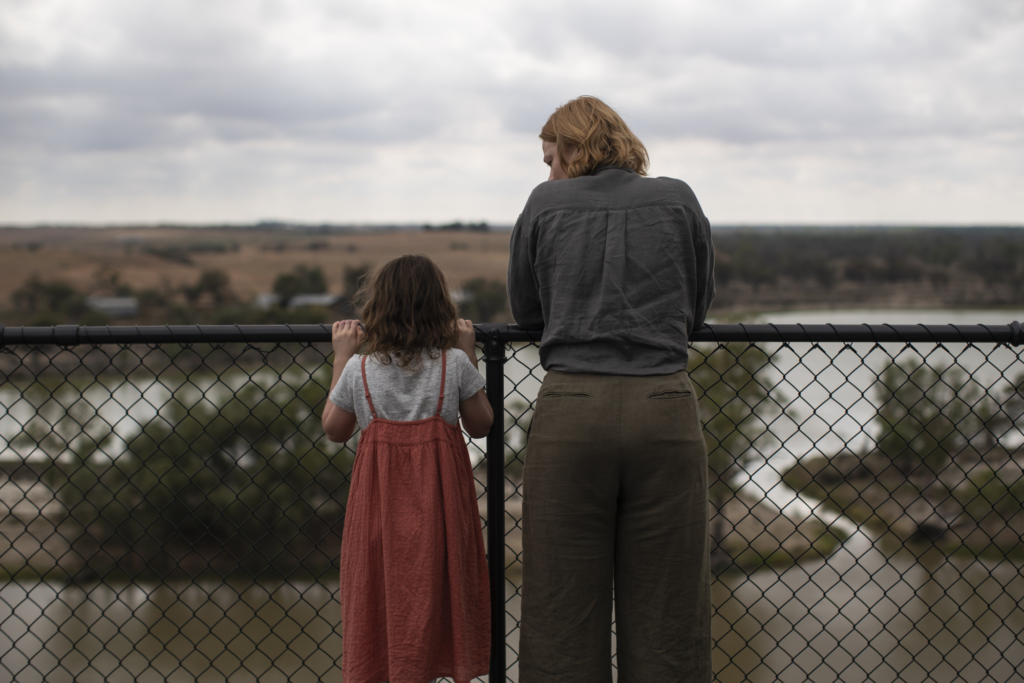In Daina Reid’s “Run Rabbit Run,” the stunning performance of Sarah Snook battles against a weakly constructed plot in an atmospheric and derivative ghost story. This Australian psychodrama delves into buried trauma and resurrected guilt, but struggles to deliver a satisfying narrative despite its promising premise.
A Troubled Protagonist and Family Dynamics in Run Rabbit Run

Sarah Snook portrays Sarah, a fertility doctor grappling with personal demons following her father’s recent passing. Sarah’s distress amplifies when her ex-husband, Pete (played by Damon Herriman), reveals his plans to start a new family. As the audience awaits the revelation behind Sarah’s reluctance, we witness her struggle while parenting their small daughter, Mia (portrayed remarkably by Lily LaTorre). The tension builds, hinting at a deeper reason for Sarah’s resistance to the idea of Mia having a sibling.
Mysterious Events and Disturbing Transformations

As the story progresses, Mia undergoes perplexing changes, transforming into an unfamiliar presence. She starts exhibiting tantrums, panic attacks, and unexplained bruising and nosebleeds. Instead of seeking professional help, Sarah acquiesces to Mia’s demands, unknowingly setting the stage for a series of disastrous consequences. In typical fashion for movies of this nature, rational adult behavior is eschewed in favor of the supernatural. A foreboding white rabbit appears on Sarah’s porch, stubbornly refusing to leave.
Atmosphere and Missed Potential
The film, titled “Run Rabbit Run,” unfolds as a gloomy and enigmatic journey, teasing viewers with its atmospheric elements but lacking in definitive commitment. It incorporates familiar tropes of spectral storytelling, including eerie dreams, unsettling artwork, and unnerving masks. Sarah Snook delivers a committed performance, conveying her character’s unraveling psyche, although it highlights the shortcomings of Hannah Kent’s script, which feels busy yet lacking depth. However, there are instances when Bonnie Elliott’s cinematography captures glimpses of a more engaging and penetrating film. Particularly noteworthy are the scenes inside a dank shed filled with ominous tools, a foreboding tunnel entangled with twisted vines, and a shocking incident involving scissors. Yet, one can’t help but yearn for a deeper exploration of the enigmatic bunny that holds symbolic significance.
While “Run Rabbit Run” showcases the talents of Sarah Snook and offers moments of visual intrigue, it struggles to overcome its weak plot and derivative nature. The film presents a captivating premise centered around buried trauma and guilt but fails to deliver a satisfying narrative experience. The atmospheric elements and Snook’s committed performance provide glimpses of a more compelling film, but overall, “Run Rabbit Run” falls short of its potential.
